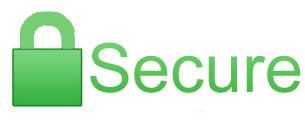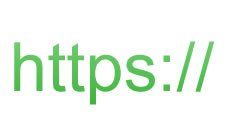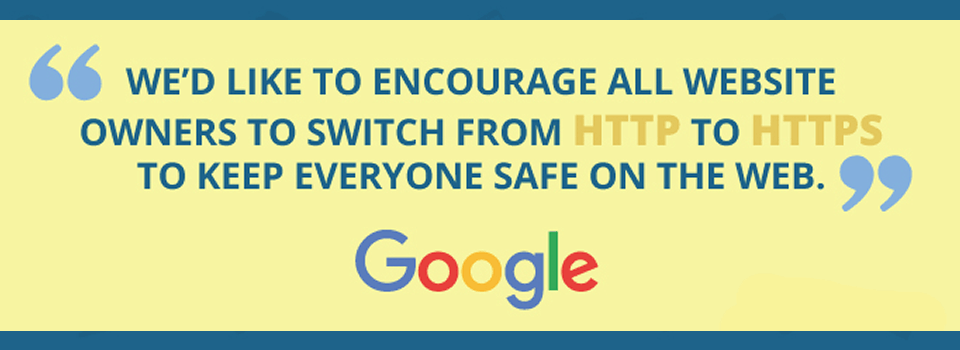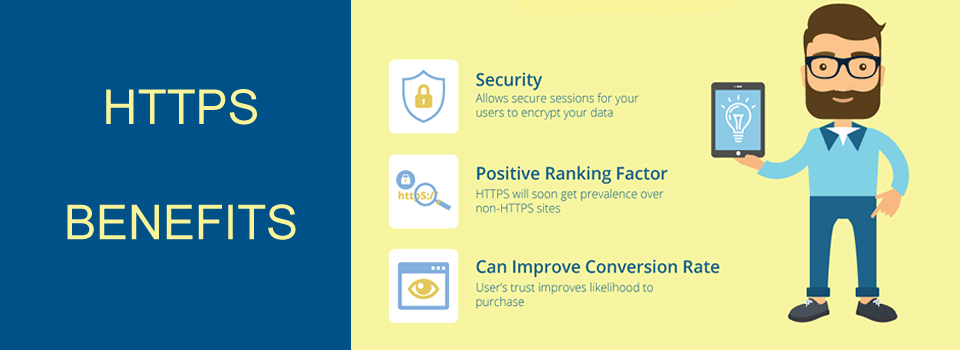SSL Explained
From "what is it" to "do I need one and if so which one" to "how much is it" and more...we've tried to answer all the obvious questions plus a few extra's that have come to our attention recently, but if we've failed and you need even more info and answers then drop us a line, send an email or pick up the phone, we don't bite, honest !
Martin Phillips,
Business Owner.
From "what is it" to "do I need one and if so which one" to "how much is it" and more...we've tried to answer all the obvious questions plus a few extra's that have come to our attention recently, but if we've failed and you need even more info and answers then drop us a line, send an email or pick up the phone, we don't bite, honest !
Martin Phillips,
Business Owner.

Secure ?
Recognize this image when you enter a website address / domain. The padlock means your website connection is secure and has an SSL certificate.
Recognize this image when you enter a website address / domain. The padlock means your website connection is secure and has an SSL certificate.
SSL - What is it ?
An SSL (Secure Socket Layer) is security technology that creates an encrypted link, keeping information sent between clients and servers private and protected.
SSL - How does it work ?
An SSL certificate works to create an encrypted connection between your visitor’s browser and the server. A secure session is established via a “handshake” process, one that involves a back-and-forth between the web browser and the web server, and it occurs behind the scenes — all without interrupting the shopping or browsing experience.
An SSL (Secure Socket Layer) is security technology that creates an encrypted link, keeping information sent between clients and servers private and protected.
SSL - How does it work ?
An SSL certificate works to create an encrypted connection between your visitor’s browser and the server. A secure session is established via a “handshake” process, one that involves a back-and-forth between the web browser and the web server, and it occurs behind the scenes — all without interrupting the shopping or browsing experience.
SSLs work by using a public key and a private key to encrypt the information it’s receiving. Each pair (public and private) are uniquely connected cryptographic keys which basically comprise of long random numbers and letters.
The public part is available to everyone whereas the private key is only available to the owner and remains confidential. The information that is inputted via the public key can only be unlocked by the private key, thus information submitted by the user such as personal information or bank details, can only be seen and used by the server or website it was intended for.
Why do I need an SSL?
When you’re receiving information off your customers, whether that’s personal information such as contact details or sensitive information as bank details, it’s important that you protect that information the best you can in order to prevent devastating security and privacy breaches if an identity thief gets access. Your customers need to be assured that you value security and will take the necessary precautions to protect their information.
Recommended by Google
Although previously, an SSL certificate was recommended it wasn’t essential for a website. Google Chrome, recently in an attempt to encourage a safe and secure internet have announced that they will now be flagging sites as insecure to users if they do not have a SSL certificate installed on their site. This would obviously have a hugely negative effect on a websites success. Even if they are not taking user details or information, the idea that a site is insecure is an immediate deterrent. You can read more about this HERE.
Although previously, an SSL certificate was recommended it wasn’t essential for a website. Google Chrome, recently in an attempt to encourage a safe and secure internet have announced that they will now be flagging sites as insecure to users if they do not have a SSL certificate installed on their site. This would obviously have a hugely negative effect on a websites success. Even if they are not taking user details or information, the idea that a site is insecure is an immediate deterrent. You can read more about this HERE.
What type of SSL do I need ?
The type of SSL you need is based on what level of assurance you want to give your potential customers. When SSL’s were first introduced to the industry, encryption would be levelled differently depending on which SSL was installed on the website, now the encryption technology is actually exactly the same no matter which SSL you are purchasing. The only thing that is different is the visitor assurance. When you input your bank details on a site you want to be confident your information is safe and protected. The more obvious a site can make this clear, the better for user experience. It has been drummed into us that user experience is everything when it comes to conversion rate so the smoother you can make their journey the more chance they’ll purchase.
The type of SSL you need is based on what level of assurance you want to give your potential customers. When SSL’s were first introduced to the industry, encryption would be levelled differently depending on which SSL was installed on the website, now the encryption technology is actually exactly the same no matter which SSL you are purchasing. The only thing that is different is the visitor assurance. When you input your bank details on a site you want to be confident your information is safe and protected. The more obvious a site can make this clear, the better for user experience. It has been drummed into us that user experience is everything when it comes to conversion rate so the smoother you can make their journey the more chance they’ll purchase.
The difference in how the SSL appears to your users is the main difference you’ll find. If you decide to go for a high visitor assurance certificate, you’ll not only get the HTTPS redirect which tells the browser that the connection to the server is safe but you’ll also get a green bar before the website address with your company name highlighted in green. This is instant visual recognition that the company and website has been verified as safe. Depending on the browser being used, other SSL’s should show somewhere in the address bar a padlock symbol to indicate that the connection is secure. If this symbol is instead shown as broken or red, the connection is unsecured.
So let's look at the address bar ...



The padlock symbol is activated which shows that the browser connection is secure. If there is no padlock or the padlock is shown as broke then the page is not secured by an SSL.
The "http" is then changed to "https" to tell the browser that the connection between the server and browser is secured.
THERE ARE DIFFERENT LEVELS AND TYPES OF SSL CERTIFICATES SO
WHICH DO I NEED ?
WHAT IS THE COST OF AN
SSL CERTIFICATE OR
CAN I GET ONE FOR FREE ?
Click HERE
SSL CERTIFICATE OR
CAN I GET ONE FOR FREE ?
ONCE I'VE OBTAINED ONE, HOW
DO I APPLY IT TO MY WEBSITE ?
DO I APPLY IT TO MY WEBSITE ?
SEE OUR SIMPLE CHECKLIST
So do I need one ?
An SSL certificate is becoming more and more important because the information you send on the internet is passed from computer to computer to get to the destination server.
An SSL certificate is becoming more and more important because the information you send on the internet is passed from computer to computer to get to the destination server.
Any computer in between you and the server can see your credit card numbers, usernames and passwords, and other sensitive information if it is not encrypted with an SSL certificate.
IMPORTANT NEWS FROM GOOGLE - as of JULY 2018
Something to also bear in mind is that in July 2018 Google will be releasing an update to their Chrome browser that will display all sites not using HTTPS with a warning that they are ‘not secure’. Along with a red warning next to the URL bar the visitor will also have to select they are happy to proceed to the site. An SSL will be the only solution to ensure your site is secure and does not include these hurdles for your visitors trying to access your site.


